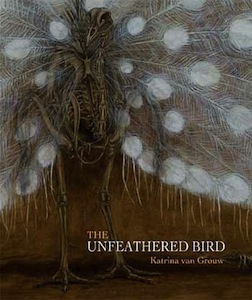It doesn’t take long before the question occurs to the most novice of new bird watchers. Whether it be the sight of a flock of ducks rising up off the surface of a pond, a hawk soaring high over head, or a hummingbird hovering gracefully in mid-air before a nectar-filled blossom; “How do they do it?” is certain to be asked. Of course, with a bit more time spent contemplating the many fascinating and various forms of the world’s birds, the subject of the question quickly expands beyond the marvel of flight to encompass all forms of locomotion, as well as other physical movements, postures, and activities.
While textual explanations of such evolutionary adaptations as pneumatized bones that allow for weight to be kept at a minimum to allow for flight or descriptions of the additional cervical vertebrae that make it possible for birds to rotate their heads sufficiently in order to reach the feathers on their backs with their beaks during preening are all well and good, nothing beats the ability to see just how such structures work for true understanding to be achieved. Anatomical diagrams can be helpful but the positions depicted are generally static. To really understand how birds do all the things they can be observed in the field as doing such diagrams must depict movement – something few have to this point done.
Katrina van Grouw has changed all that. With the publication of her superb book The Unfeathered Bird, she has provided an unparalleled compendium of three-hundred-eighty-five carefully drawn as well as visually beautiful illustrations of the skeletal, muscular, and other interesting anatomical features of a wide range of bird species depicted in the positions of their normal activities. Given her background as a former curator of ornithological collections at London’s world-famous Natural History Museum, a taxidermist, and a fine artist with a degree from England’s Royal College of Art, it is difficult to image a person better suited to the creation of such a book as this – almost as difficult as it would be to envision the anatomies of some of the remarkable bird species she has included in it.
Ranging from ratites to tanagers Ms. van Grouw’s illustrations and accompanying explanations cut through the usual scientific jargon common to most books about bird anatomy and make the form and function of the bodies of her subjects easily intelligible to any and all who are interested. And with such fascinating anatomical “curiosities” as the hole in the skull of the domestic Crested Duck that causes it to grow its distinctive “top knot” and the astonishingly coiled windpipe of the Australasian Trumpet Manucode that simply must be seen to be believed included among the depicted species it is difficult to imagine anyone not becoming absolutely transfixed after even casually browsing just a few pages.
 Book Title: The Unfeathered Bird
Book Title: The Unfeathered Bird
Author: Katrina van Grouw
Publisher: Princeton University Press
Imprint: Princeton University Press
Format: Clothbound
ISBN: 9780691151342
Published: 2013
—
By using this link to purchase The Unfeathered Bird through Amazon.com a portion of the purchase price will go toward helping The Well-read Naturalist continue to publish news and reviews of interesting and well-written books about natural history subjects.
In accordance with Federal Trade Commission 16 CFR Part 255, it is disclosed that the copy of the book read in order to produce this review was provided gratis to the reviewer by the publisher.
